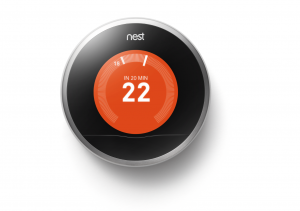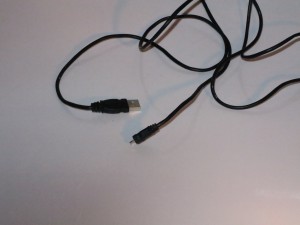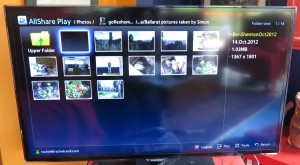Regular readers may have noticed me giving some space to the network-capable CD receiver of the same ilk as the Rotel RCX-1500, Naim Uniti series, the Cyrus Lyric series and Sony’s newest offering in the form of the MAP-S1. I am writing about why I give coverage to these systems as a network-capable music-system option.
The rise, fall and renaissance of the high-quality integrated system.

Cyrus Lyric network-enabled CD receiver
These followed on from the “music centres” or “compact stereos” of the 1970s and 1980s which housed a turntable, receiver, cassette and / or 8-track cartridge deck in one box connected to a pair of separate speakers. Systems of that class that were worth buying approached a functionality and sound-quality standard that was equivalent to a baseline component-style hi-fi system.
Some users preferred to buy this class of integrated music system because of the fact that it was simpler to use or understand and there was less to worry about compared to a component-based hi-fi system. In some cases, it meant that the system ended up being used by more members of the household for more music-enjoyment tasks rather than one or two highly-knowledgeable people.
This kind of standard for integrated home audio had died out through the late 1980s with Bang & Olufsen, Bose, Proton, Onkyo and a few others carrying the flag through the 1990s and beyond. This was while integrated systems that most people could afford at that time didn’t hit the mark for sound quality or, in a lot of cases, functionality or build quality.
The category resurfaced in the late 1990s with NAD, Denon, Onkyo and a few others offered CD receivers and DVD receivers that didn’t come with a set of matching speakers. One UK hi-fi magazine even described it as the return of the 1970s-era music centre. Onkyo even fielded a system that could be considered today’s equivalent of the music centre by offering the FR-435 which had a CD player, FM receiver and MiniDisc deck in one box.
The network-capable CD receivers mentioned here take on the CD-receiver concept and become part of the home network to provide access to Internet radio, online music services and music stored on that network.
The typical network-capable CD receiver
Amplifier design

Rotel RCX-1500 CD receiver
These CD receivers are typically built with amplification sections that could approach that or, in some cases, be equivalent to. a competently-designed baseline integrated hi-fi amplifier. This means that they can be used with any pair of competent speakers that the customer chooses to use it with.
There are a few examples of this concerning music systems of this class that come to my mind. One was a demo setup for the Onkyo FR-435 CD/MiniDisc receiver which involved it being connected to a pair of floor-standing hi-fi speakers made by a hi-fi “name of respect” and I had played a personal-compilation MiniDisc through this setup with it performing very competently..
Another was the review setup that International Dynamics provided me with when I reviewed the Rotel RCX-1500 network-capable CD receiver. This setup consisted of the CD receiver and a pair of Cabasse Antigua bookshelf hi-fi speakers connected with a pair of very-low-resistance hi-fi-grade speaker cables.

Marantz CR603 CD receiver – One of the many DLNA-capable hi-fi components shown at the Australian Audio & AV Show
Similarly, when I was at the Australian Audio & AV Show 2013, I had seen and heard a preview sample of the Cyrus Lyric network-capable CD receiver in full flight with a pair of Quadral Montan floor-standing speakers. This was, at one time, streaming music from a Bluetooth-connected phone or, earlier on, playing music off a CD.
These systems can easily serve certain realities concerning the availability of speakers.
One could be that you already ended up with a pair of good speakers. For example, you have ended up with Dad’s old Klipsch hi-fi speakers when your family were clearing out your parents’ house after he passed away and Mum had to move to supported accommodation. Or you went to an estate sale or auction and ended up with a pair of hi-fi speakers of a respected audio name that were in good condition for pennies’ worth.
On the other hand, you could be able to buy the CD receiver with a pair of speakers that suit your needs and budget at the hi-fi store you were buying it from. This may also include being able to look at what the hi-fi store offers when it comes to second-hand speakers in very good operating condition which could be trade-ins or a pair or two that they are tasked with selling on consignment.
Functionality
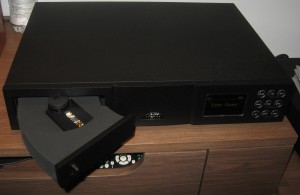
Naim Uniti network CD receiver with Naim’s distinct CD-loading tray – now has been improved to the Uniti 2
These systems offer a CD player, FM/DAB+ radio, USB file-based audio playback along with network-based AV sources like Internet radio or DLNA audio playback in that one box. Newer generations even come with Bluetooth A2DP audio play from mobile devices along with access to various online audio sources other than an Internet-radio directory, like Spotify, Deezer or Pandora.
The limitations that may be exposed by these systems may include fewer connections for other audio devices. This may manifest in the absence of a phono stage where you can connect most turntables equipped with a magnetic cartridge or the absence of a “tape-loop” where you can connect a recording device like a cassette or MiniDisc deck and be able to record from or play to the CD receiver. As well, you may only find up to two line-level inputs on these systems. The reasoning behind this is that the network-capable CD receiver offers most functions in that one box.
Build quality and longevity
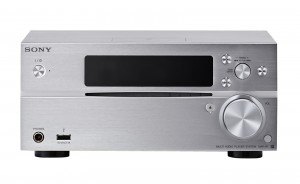
Sony’s new entry to the CD-receiver scene
I draw attention to these systems due to them being built to last which is important if you do either expect to use it frequently or see it staying around for a long time. It also underscores amongst users that they want to frequently play a well-built system that is less likely to break down with the regular use.
Newer systems will even implement user-updatable firmware to allow the system to support new online music services or newer networking standards and audio file types.
In some ways, the longevity that these CD receivers offer would justify the price tag especially in this economic climate where the idea is to look for value and durability so you don’t end up spending too much over the long term.
Relevance
Smaller residence

Arcam Solo Neo CD receiver
The network-capable CD receiver is intended to satisfy a trend for smaller living spaces which is likely to become the norm for two main user classes. One user class would be a tertiary student who is living in student accommodation i.e. a student hostel, college dorm or residence hall. This would also extend to people living in accommodation associated with their job where the accommodation space is a small apartment or a room of a similar size to a hotel room. This also includes people who share a house and find that their private space is simply a bedroom.
Another user class would be a retired person or couple, or a couple whose children have flown the “family nest”. Here, these people would opt for smaller premises such as a decent-standard inner-urban apartment located close to city activities like the good theatres, or they could be living in retirement or assisted-living accommodation which would typically yield a small bedroom or a small apartment.
Both situations may not easily accommodate a stack of regular-width hi-fi components due to the small size of the living quarters or having such equipment may overwhelm these spaces.
Secondary music system
Even a larger house where you can have a “stack” of hi-fi components as your main A/V or audio system may yield a space where a secondary audio system may be desired. Examples of this may be a secondary lounge area like a large landing or foyer; a dining room or simply a master bedroom. To the same extent, these systems would earn their keep in a small office or shop, providing high-quality music for the patrons.
All these situations could easily be passed off as being suitable for a cheaper music system which is something you would do on a budget. But for those of us who want high-quality sound without an underpowered amplifier straining because too much is asked of it or are used to a good hi-fi system serving your music needs, these network-capable CD receivers could simply answer these needs.
This can also extend to a high-quality three-piece music system that you may want to set up in your shop or office to reflect the tone of your business. The network ability could then allow you to benefit from music held on a small NAS or online-hosted music services like the “new shortwave” that is Internet radio.
Changing needs
It is more so if you have changing needs and can easily purpose these systems either as a primary music system or a secondary music system as required. An example of this could be to purchase one of these units as a secondary system for the “den” in the large house, then take it with you to the small apartment as the hub of a decent music system.
Conclusion
I do give space on this Website to the premium network-capable CD receivers due to them being able to be the heart of a well-built good-quality music system that caters to the downsizing trend that is affecting how we live nowadays without losing on the good-quality sound that a lot of us are used to.

